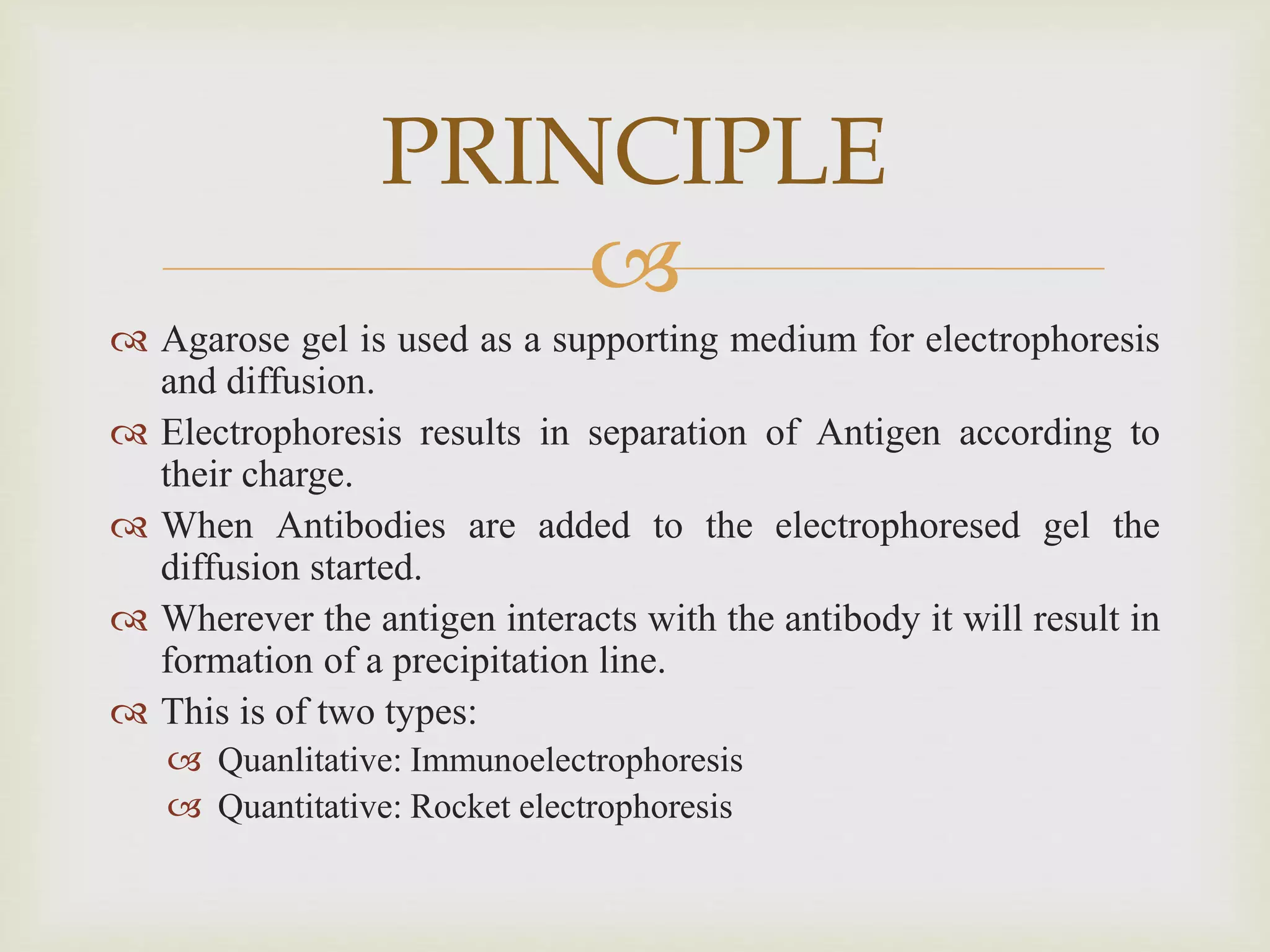Immunoelectrophoresis is a diagnostic technique combining electrophoresis and double immune diffusion to identify antibodies in blood serum. It involves separating antigens by charge and observing precipitation lines formed when antibodies diffuse towards their corresponding antigens. This method is utilized in clinical laboratories to detect protein levels and diagnose immunodeficiency diseases.








